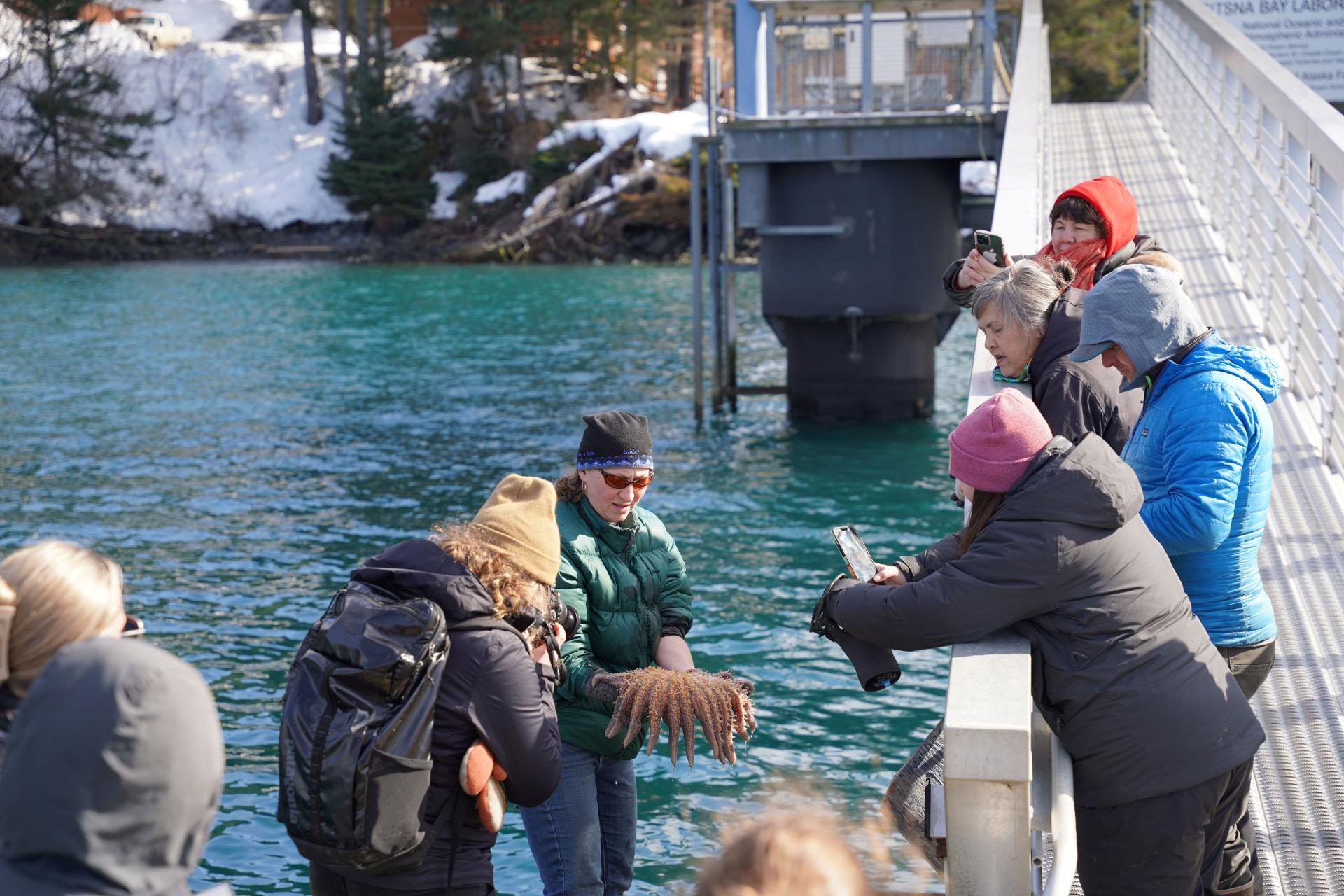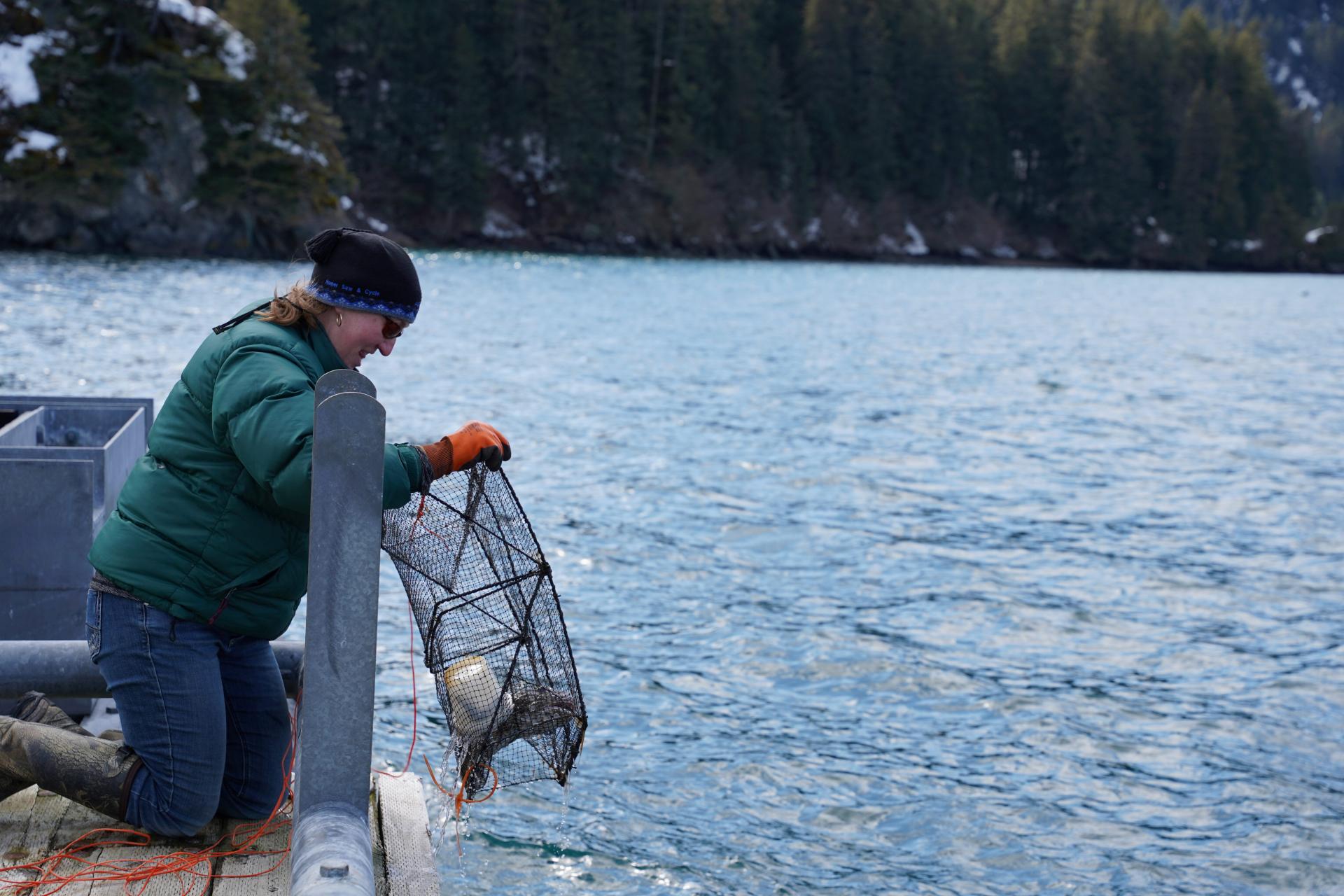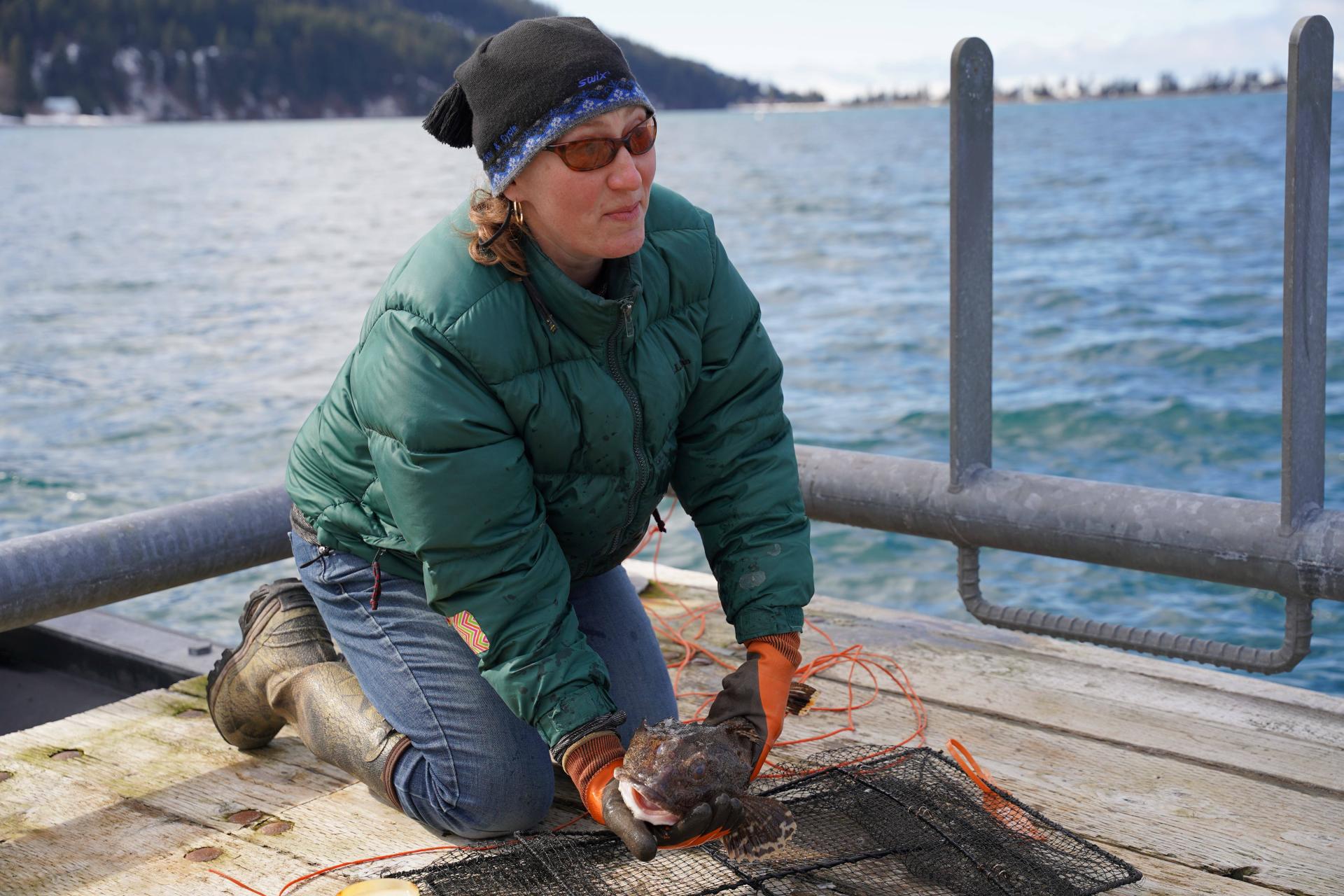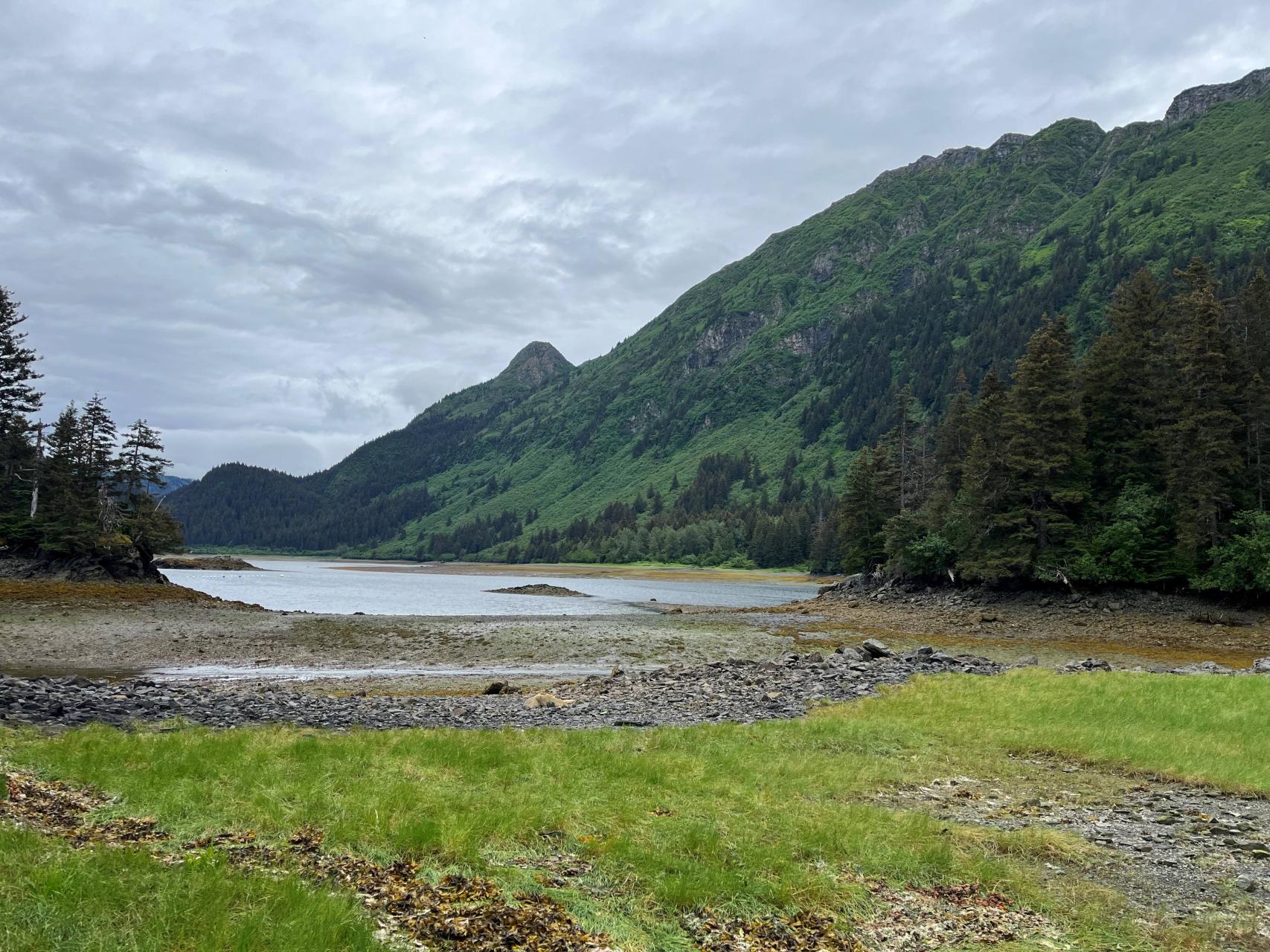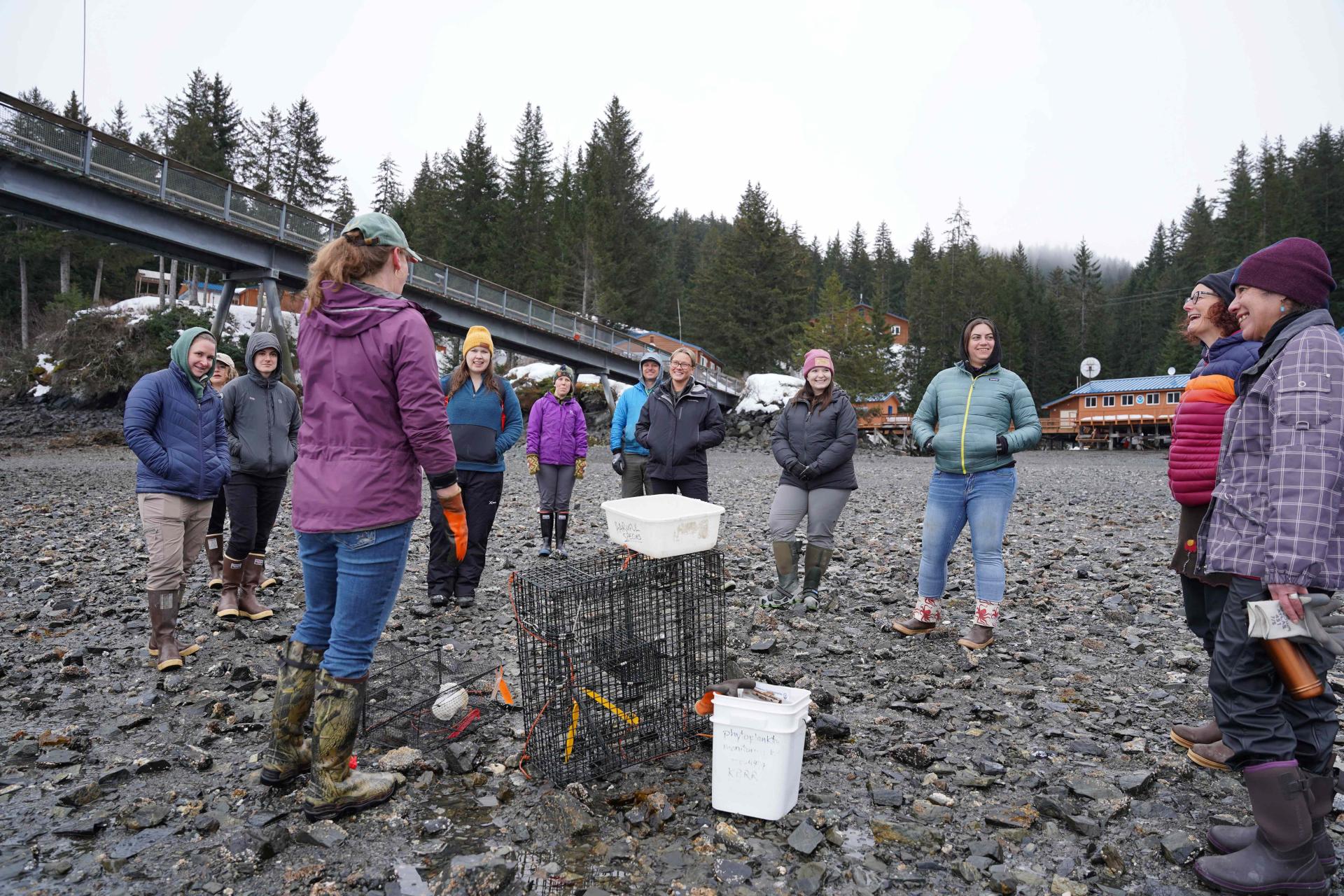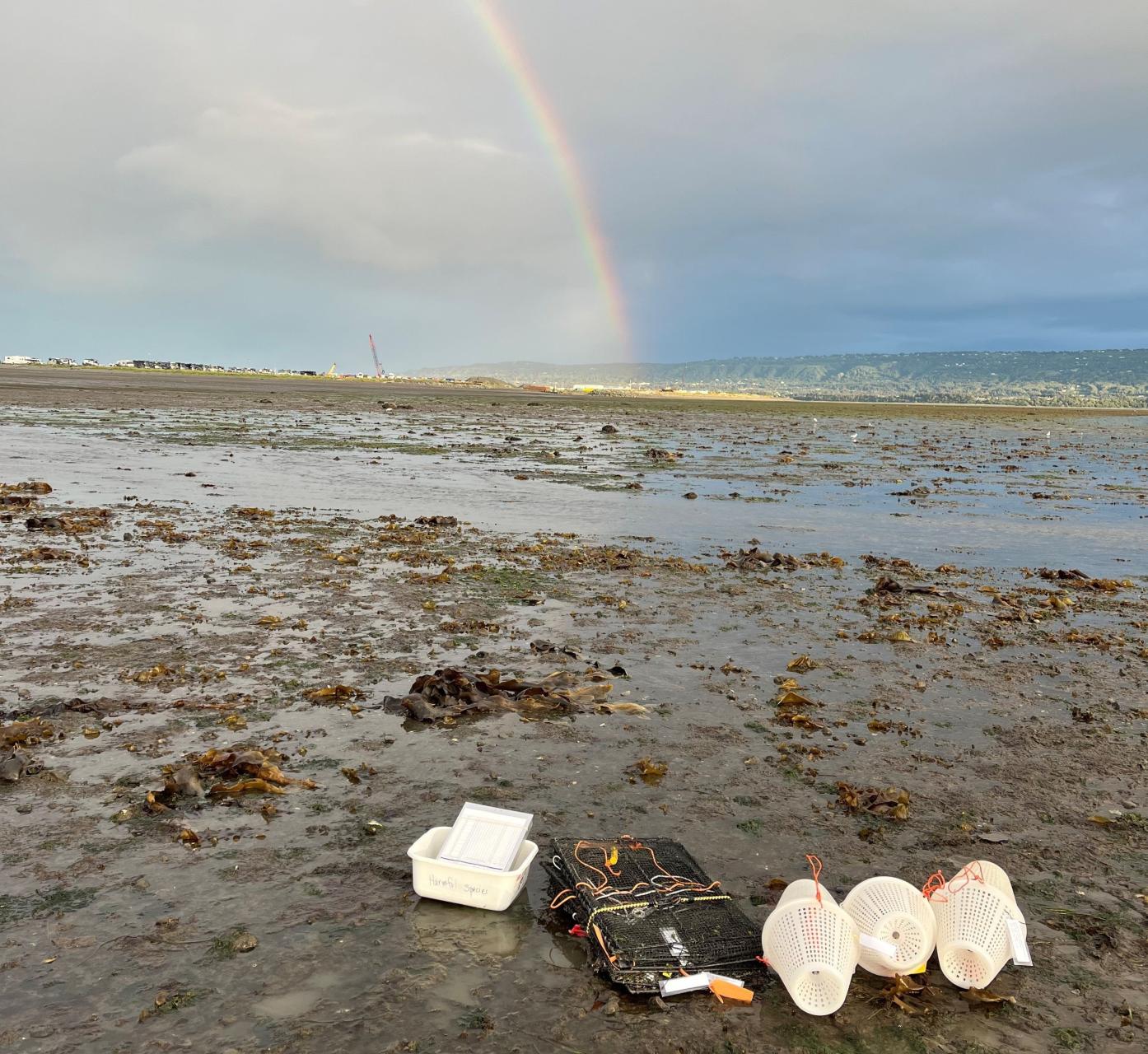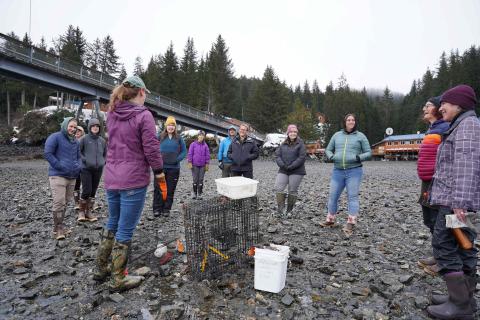
This project will transfer evidence-based techniques, protocols, and standardized early detection practices for European Green Crab from Washington’s Padilla Bay Reserve and partners to Kachemak Bay Reserve and the cohort of invasive species monitoring organizations in Alaska.
The nearshore and intertidal habitats of Alaska are some of the most biologically productive and
socio-economically important habitats in North America. The invasive European green crab (EGC) was found in southeast Alaska in 2022 following years of rapid expansion and population growth in the North East Pacific, with wide economic and social impacts. This marine invader is an ecosystem engineer that can alter coastal erosion rates; destroy nearshore nursery habitat; impact mussels, clam beds, and commercial mariculture operations; compete with native crab, fish, and birds for food resources; and is known to eat juvenile salmon and other fishes. The discovery of invasive EGC in Southeast Alaska elevated concerns about the inevitable spread and highlighted the need to proactively enhance coordination and detection efforts throughout the state. Statewide partners need a collaborative training plan to harness collective knowledge and resources, effectively identify areas of likely EGC establishment, and mitigate the threat to nearshore habitats and species of commercial, subsistence, and cultural value.
This project will facilitate transfer of evidence-based techniques, protocols and standardized early detection practices from Washington’s Padilla Bay NERR and Sea Grant Crab Team to a cohort from Alaska representing organizations actively engaged in invasive species monitoring: Kachemak Bay NERR, Prince William Sound Regional Citizens’ Advisory Council, Alaska Department of Fish and Game, and Alaska Sea Grant. Planned activities include the development and implementation of a train-the-trainer workshop resulting in a collaborative early detection network across Alaska’s coastal communities. This coordinated effort ensures standard data collection and sharing, maintains and builds new partnerships, updates methods and techniques, and builds skills in training techniques to engage monitors across the state.
Jasmine Maurer (Kachemak Bay NERR) gives an introduction to "The Race is On: Transferring Knowledge Ahead of Marine Invasives."
